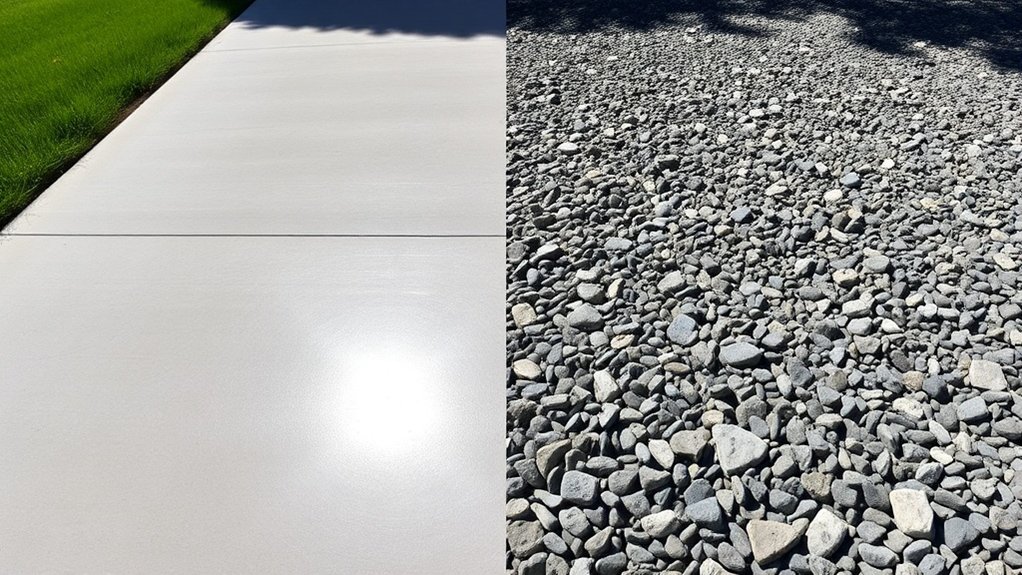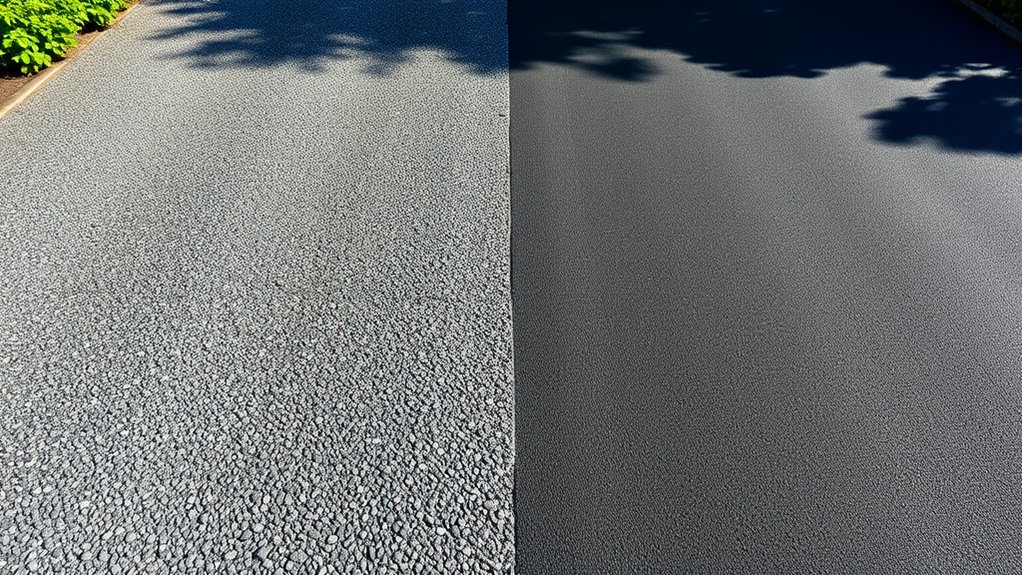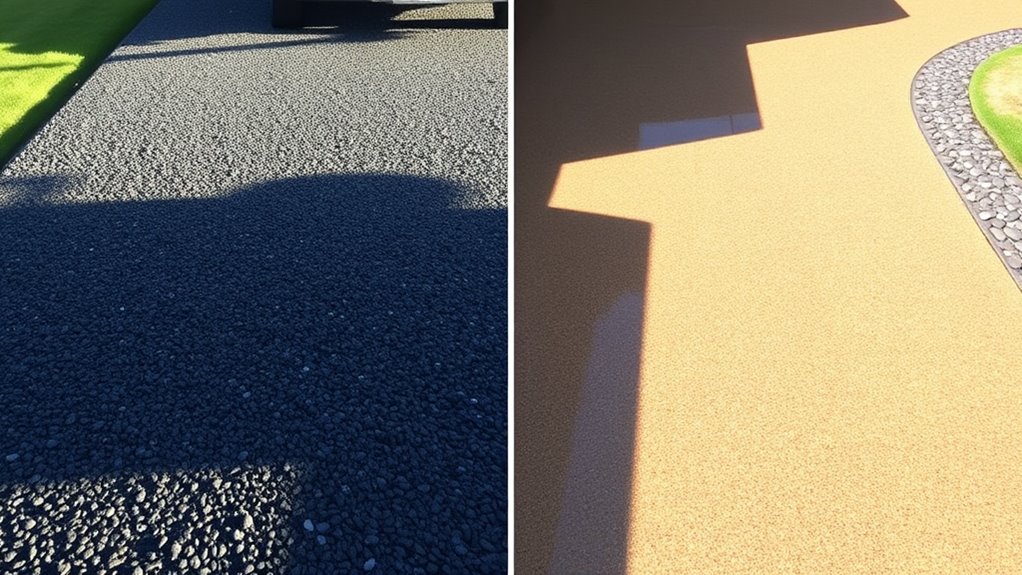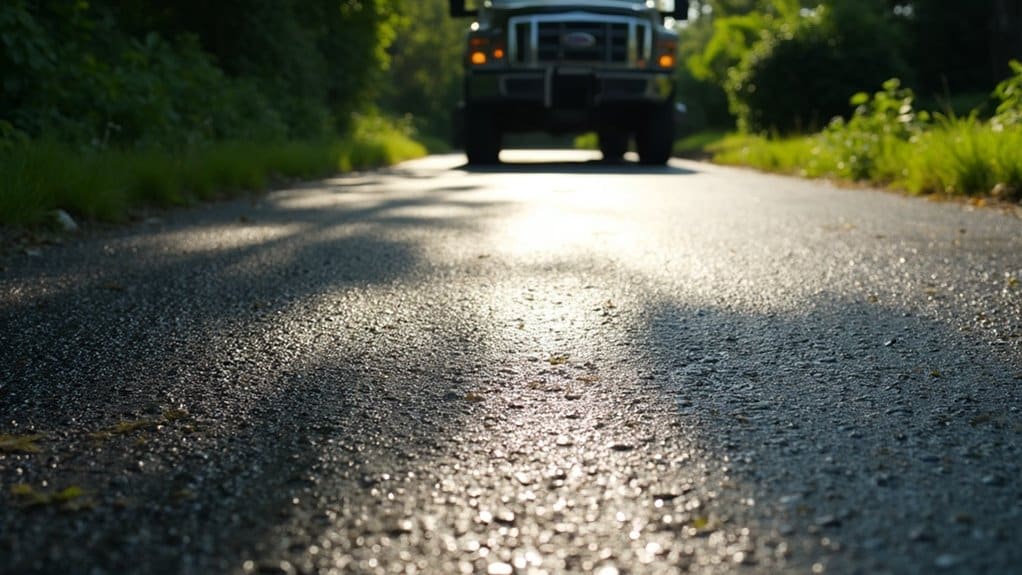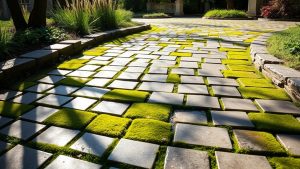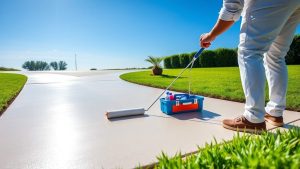When choosing between a concrete or gravel sub-base for your driveway, consider factors like drainage, soil type, and the expected traffic. Gravel is a cost-effective option that offers excellent drainage but requires more maintenance, such as regular topping up and weeding. For instance, if you live in an area prone to heavy rain, gravel may help prevent pooling.
On the other hand, concrete, while more expensive initially, provides durability and requires minimal upkeep, making it ideal for households with high traffic. For example, if you frequently park multiple vehicles or have heavy deliveries, concrete could be the better choice.
Ultimately, your decision should reflect your specific needs and local conditions. Take the time to weigh these options to ensure your driveway performs well for years to come.
Table of Contents
ToggleKey Takeaways
- A well-built sub-base is vital for the durability and performance of your driveway, whether you opt for gravel or concrete.
- Gravel is generally more affordable upfront but requires regular upkeep, whereas concrete offers greater longevity and durability, making it a wiser long-term investment.
- Efficient drainage is essential; both materials can effectively manage water to prevent damage.
- Proper compaction during installation is key to ensuring stability and reducing surface stress, regardless of the sub-base type.
Purpose and Function of a Sub-Base for Driveways

The sub-base for driveways is a vital foundation layer that significantly affects the durability and performance of the surface above. Made from compacted materials like crushed stone or gravel, it provides a stable base that prevents displacement and can support the weight of vehicles. By evenly distributing loads, the sub-base reduces stress points that might cause cracking or settling. Proper compaction is crucial to ensure the sub-base has the right density, which prevents shifting under load. Typically, it should be between 100 to 150 mm thick, depending on soil conditions and expected traffic. A well-prepared sub-base helps avoid uneven settling, improving the longevity of your driveway and maintaining its structural integrity even with regular use. Additionally, a sub-base is essential for load distribution, which further enhances the durability of the driveway. Furthermore, using a compacted MOT Type 3 sub-base is recommended for optimal stability and performance.
Advantages of Gravel as a Sub-Base for Concrete Driveways
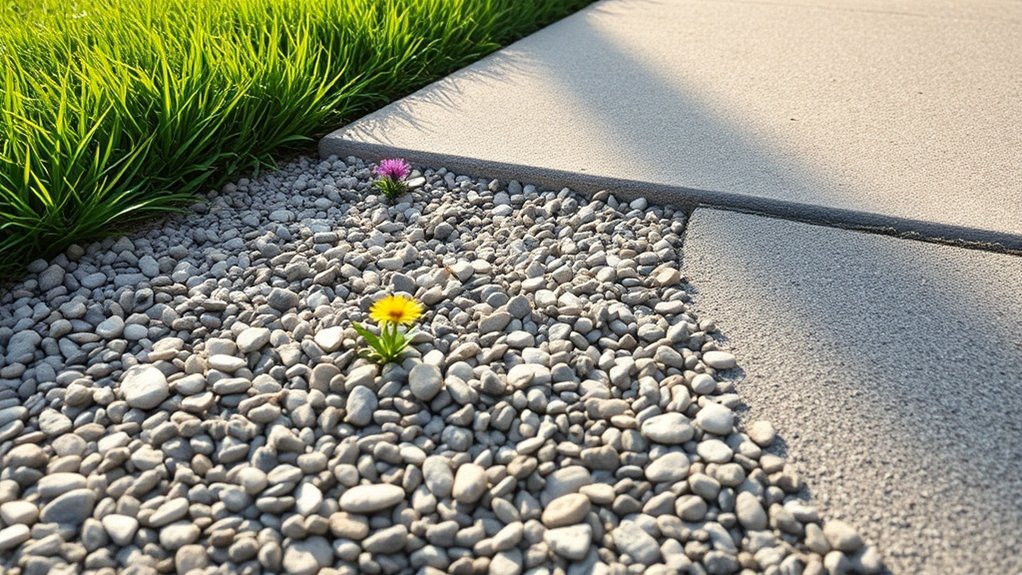
When selecting a sub-base for concrete driveways, gravel is a top choice due to its many advantages that improve both performance and durability.
Gravel excels in drainage, effectively preventing water build-up, which reduces the risk of cracking and soil erosion. It also provides a stable foundation by evenly distributing vehicle weight, which minimises stress points and maintains stability. Furthermore, gravel is quicker and more cost-effective to install than concrete alternatives, allowing for faster project completion. The use of a gravel base also prevents shifting of concrete with soil movement, ensuring long-lasting durability. Additionally, proper drainage is important for compliance with regulations, as it supports groundwater recharge and reduces the risk of flooding.
Additionally, using gravel supports environmentally friendly practices by promoting groundwater recharge and reducing carbon emissions associated with production.
| Gravel Advantages | Description |
|---|---|
| Drainage Efficiency | Minimises moisture retention and prevents erosion |
| Stability | Distributes weight evenly and adapts to soil movement |
| Easy Installation | Requires less labour and has no curing time needed |
Considerations for Using Concrete as a Sub-Base Material
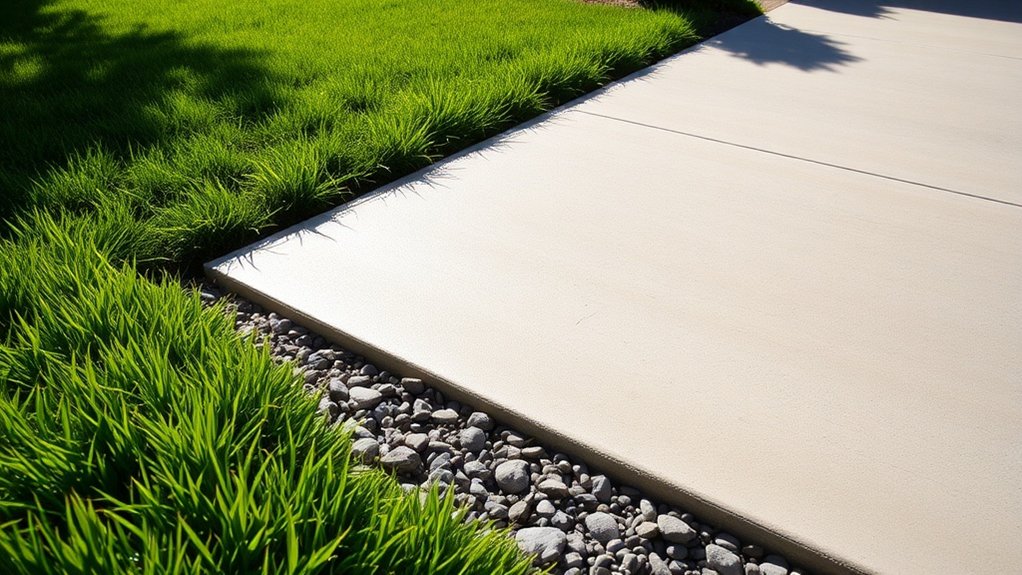
When selecting concrete as a sub-base material for driveways, consider its structural stability and ability to distribute loads effectively. Concrete provides significant advantages over other sub-base materials, helping to ensure even load distribution and reducing the risk of cracking. A well-prepared base is crucial for driveway longevity as it supports vehicle weight and prevents cracking. Additionally, using a proper drainage management system can further enhance the durability and performance of the sub-base.
- Compaction: Aim for at least 95% compaction to boost stability and minimise soil movement.
- Drainage Design: Ensure a minimum slope of 1/8 inch per foot to direct water away and prevent erosion.
- Material Composition: Opt for lean mixes or plain concrete that meet British Standards for optimal strength.
Recommended Depth and Layering for Sub-Bases
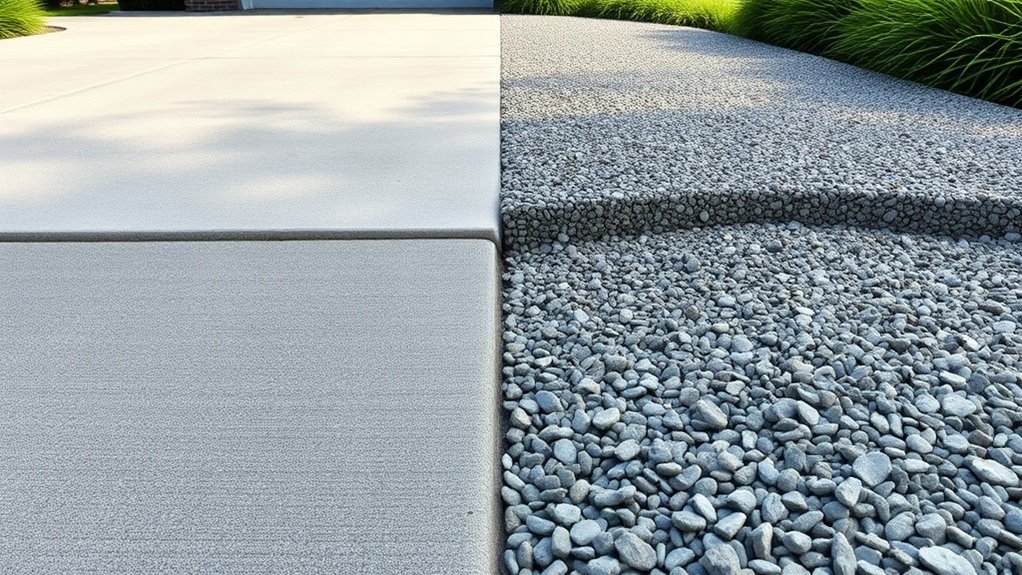
When planning your driveway, it’s important to get the sub-base depth right for stability and durability. For residential driveways, a sub-base layer of 100 to 150mm is generally recommended, though this may need to be adjusted depending on the specific site conditions and the loads it will bear.
In addition, employing effective layering techniques, like adding a weed membrane and a gravel surface, can significantly improve drainage and help prevent weeds from growing.
This simple approach will ensure your driveway remains functional and visually appealing for years to come.
Ideal Sub-Base Depth
The ideal depth for a driveway sub-base generally ranges from 100 to 200 millimetres, depending on usage and soil conditions.
Here are some key points to consider:
- Residential Driveways: A minimum depth of 100 millimetres is needed, while 150 millimetres is recommended for areas with heavy traffic.
- Soil Type: If you’re dealing with weak or clay soils, consider increasing the sub-base depth to between 200 and 300 millimetres for improved stability.
- Compaction: Ensure that the sub-base materials are compacted to at least 95% density. This helps prevent sinking and enhances the load-bearing capacity of the driveway.
Layering Techniques Explained
Layering techniques are crucial for creating a stable and durable driveway sub-base, as they improve compaction and load distribution.
Use suitable materials such as MOT Type 1 aggregate, crushed stone, or recycled concrete aggregate. For best results, lay and compact the sub-base in layers, ideally 50mm thick, or up to 75mm for heavier materials.
Each layer must be thoroughly compacted with tools like a wacker plate or vibratory roller to increase density and eliminate air pockets. This method helps prevent future issues like cracking or settling.
Also, ensure there’s a slight gradient for drainage to direct water runoff effectively, while keeping your sub-base level and robust for long-lasting performance.
Importance of Drainage and Soil Preparation
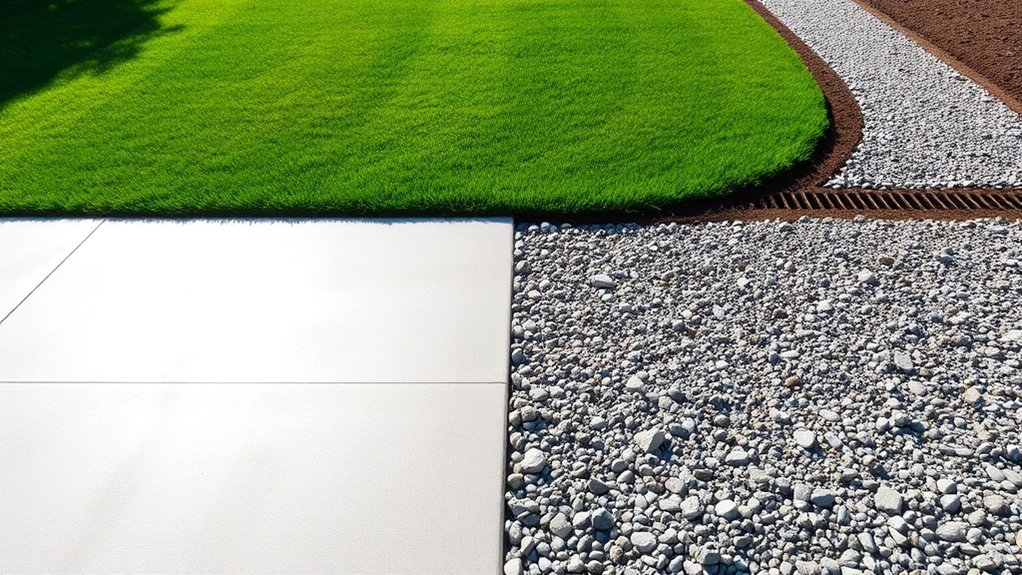
Proper site excavation and effective water management are crucial for a stable driveway foundation.
Removing organic matter and ensuring adequate drainage can significantly minimise the risk of shifting and cracking.
For instance, if you live in an area prone to heavy rainfall, good drainage will help prevent water pooling, which can undermine the surface.
This preparation not only strengthens the structure but also prolongs the lifespan of your driveway.
Proper Site Excavation
When starting a driveway project, proper site excavation is essential for ensuring durability and effective drainage. Here are some key steps to follow:
- Site Clearance: Clear away all vegetation and debris to prevent root regrowth, which could undermine soil stability.
- Excavation Depth: Excavate to the correct depths—4-6 inches for gravel and 8-12 inches for concrete—using techniques suited to the soil type.
- Soil Testing: Carry out soil tests to check moisture levels and load-bearing capacity, adjusting your excavation plans to tackle any problematic soils.
Effective Water Management
Proper water management is essential for the durability and performance of your driveway. Poor drainage can lead to serious structural problems over time. Effective solutions like channel drains and French drains help redirect water away from your driveway, reducing erosion and surface damage.
Before installation, assess soil permeability to ensure optimal water absorption, which prevents saturation and standing water that could create slip hazards.
A well-prepared sub-base using gravel or crushed stone promotes drainage by allowing water to filter downwards. It’s also important to balance soil compaction—too much compaction can slow down water infiltration.
Material Selection Criteria for Driveway Sub-Bases
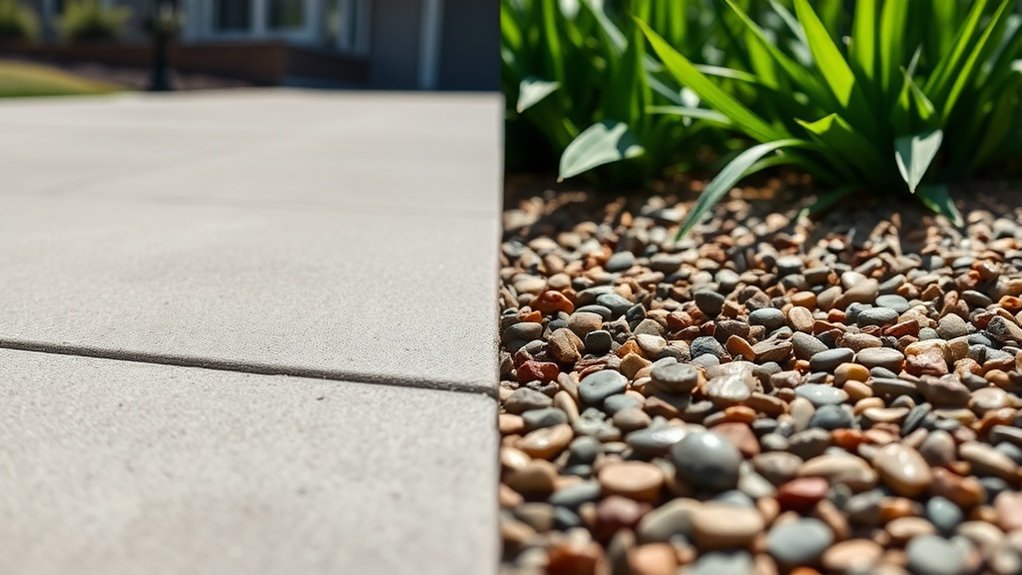
Choosing the right materials for driveway sub-bases is crucial for ensuring long-lasting performance. Here are the key factors to consider:
- Drainage Performance: Opt for materials such as crushed stone or recycled concrete aggregate, as they provide excellent drainage and help prevent water pooling.
- Climate Compatibility: Select materials that can withstand freeze-thaw cycles and extreme temperatures. For example, crushed granite is a reliable option across various UK climates.
- Soil Type Interaction: Evaluate your subgrade soil—sandy or clay soils will need different specifications to ensure proper compaction and installation.
Cost Implications of Gravel vs. Concrete Sub-Bases
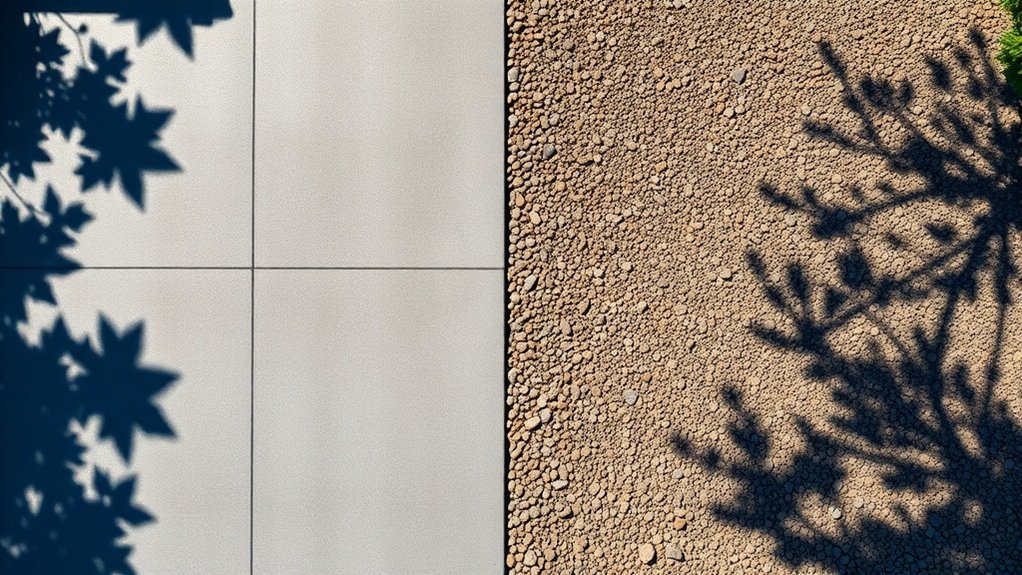
When comparing gravel and concrete sub-bases, it’s important to consider their cost implications.
Gravel installation typically costs between £10 and £25 per square metre, making it significantly cheaper than concrete, which can go up to £100 per square metre. The installation of gravel requires less equipment and labour, keeping initial costs low.
However, gravel does need maintenance every 1-3 years, which can add around £5 per square metre over time. In contrast, concrete is more durable and requires minimal maintenance, spreading out its higher upfront cost over its lifespan.
Weigh these factors carefully to determine what fits best with your budget and long-term plans for your driveway.
Long-Term Performance and Longevity of Driveway Sub-Bases
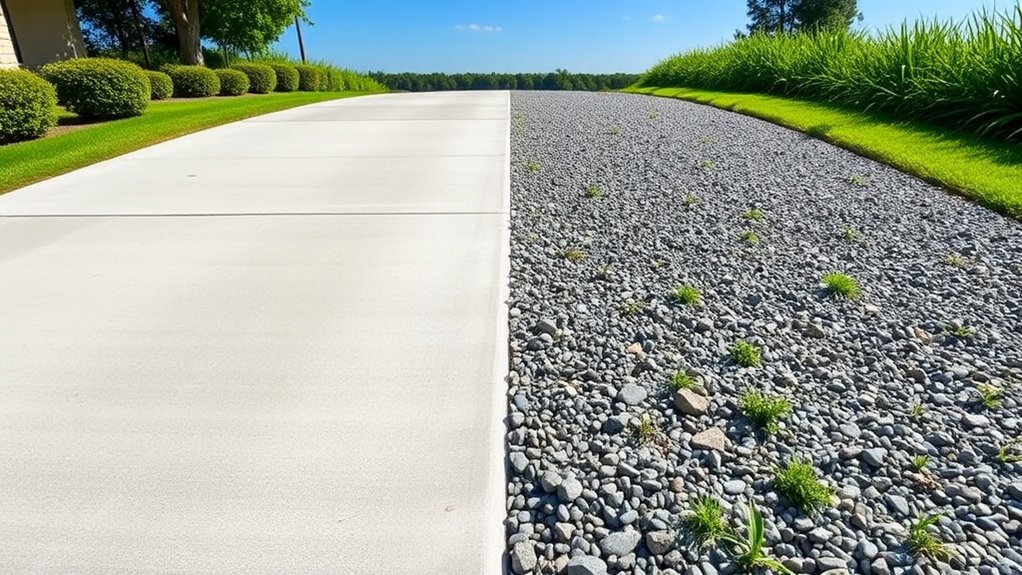
How does the choice of sub-base material affect the long-term performance of your driveway? The sub-base plays a crucial role in longevity, load distribution, and drainage. Choosing the right material isn’t just about durability; it also aligns with sustainable practices.
Here are some important factors to consider:
- Drainage Efficiency: Materials like gravel and crushed stone improve water management, helping to prevent freeze-thaw damage during winter months.
- Load Distribution: A well-compacted gravel sub-base distributes weight evenly, which reduces stress on the surface and helps to avoid premature cracking.
- Maintenance Needs: Gravel sub-bases are easier to repair, while a concrete sub-base may incur expensive replacements if damaged.
Investing in a suitable sub-base won’t only extend your driveway’s lifespan but also enhance its performance, ensuring it withstands various weather conditions over time.
Frequently Asked Questions
How Do I Know if My Soil Is Suitable for a Sub-Base?
To check if your soil is suitable for a sub-base, start with soil testing to assess moisture content and density. It’s also important to evaluate drainage options to ensure effective water management, which helps prevent issues with compaction and stability in the long run.
Can I Install a Sub-Base Myself, or Should I Hire a Professional?
Can you tackle the challenges of sub-base installation yourself? While a DIY approach might save you some cash, hiring a professional brings valuable expertise in compaction, drainage, and efficiency, which can lead to a more durable finish. For instance, a skilled installer will ensure the sub-base is perfectly level and well-drained, reducing the risk of future issues.
What Are the Signs of a Failing Driveway Sub-Base?
Signs of a failing driveway sub-base include sinking patches, cracks wider than a quarter-inch, and soft spots. Regular maintenance can help spot these problems early, preventing more extensive damage and expensive repairs later on.
How Does Climate Affect the Choice of Sub-Base Material?
Climate significantly influences your choice of sub-base material. In cold climates, opt for stable materials that can withstand freezing temperatures. For areas with expansive soils, it’s crucial to choose materials that can be compacted effectively to handle shifting soil, ensuring long-term durability and structural integrity.
Can I Use Recycled Materials for My Driveway Sub-Base?
Yes, you can use recycled aggregates for your driveway sub-base. They are environmentally friendly options that offer good load-bearing capacity and contribute to sustainability. For instance, crushed concrete or reclaimed asphalt is often used, helping to reduce waste and lower project costs.
Conclusion
In summary, deciding between gravel and concrete for your driveway’s sub-base depends on your specific requirements. Research indicates that a well-built gravel sub-base can enhance drainage efficiency by up to 40%, helping to prevent water pooling and extending the lifespan of your driveway. By thoughtfully choosing materials, depth, and drainage solutions, you can improve the durability and functionality of your driveway, ensuring it lasts while meeting your needs.
Beneath the surface of tarmac and asphalt driveways lies a world of differences; discover which option suits your needs best.
Choosing between a tarmac and resin driveway can be challenging; discover the key factors that could influence your decision.
Tarmac driveways can support impressive weights, but understanding the key factors will help you determine just how much yours can Read more

